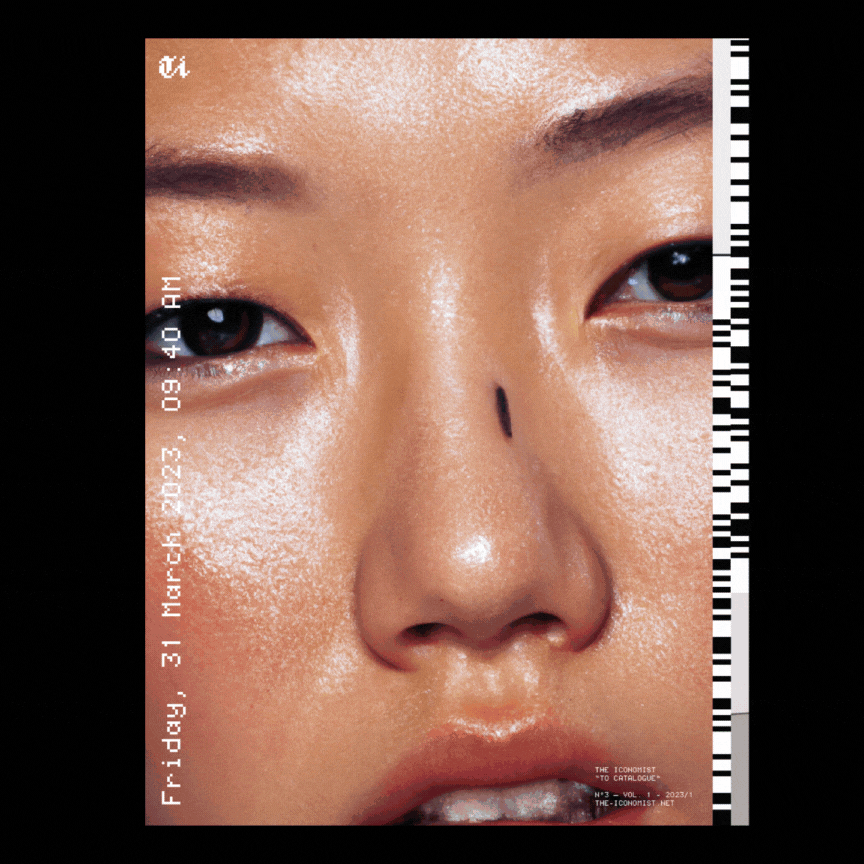SECURE CHECKOUT
via Ma


Nº 4 — To ask/To Answer/To refuse
Introducing THE ICONOMIST’s latest thematic dossier. For the edition that closes the first of four editions of the magazine, we embarked on the world of interviews and questionnaires. What is a photograph? What is photography? What is an image? In addition to these questions, we also took inspiration from Proust’s questionnaire and JG Ballard’s short story “Answers to a Questionnaire”, a list made up only of answers to unknown questions. In addition, we also present selected texts by Lucas Samaras and his 1978 Auto-Interview, Marlene Dumas, Thomas Hirschhorn and others.44 pages, 21x28cm, saddle-stitch binding, with shipping worldwide.
FREE
DOWNLOAD .PDF$20 USD
BUY NOW
![]()
![]() Nº 3 — To catalogue
Nº 3 — To catalogue
Introducing THE ICONOMIST’s latest thematic dossier. This edition takes inspiration from art magazines and catalogues to curate a collection of images that provoke and question our relationship with artwork documentation in the age of artificial intelligence. All the clichés of the art world are represented, the artist’s studio, the the gallery, the white walls, the compositions, the descriptions. We are excited to present a selection of proposals of artworks that are now part of the #theiconomist collection, with complete descriptions and speculations on their materiality. As a complement to this visual content, we have also included selected (and inspiring) texts from authors such as Boris Groys, Hito Steyerl, Georges Didi-Huberman, Man Ray, and more. The film Concrete Lache (2010), which Mark Leckey created about the Milton Keynes Gallery, will be on view in our website in the STREAMING section, which will be updated weekly with new videos and films.

44 pages, 21x28cm, saddle-stitch binding, with shipping worldwide.
FREE
DOWNLOAD .PDF$20 USD
BUY NOW

Nº 2 — To wear
THE ICONOMIST’s new thematic dossier is out. At first glance, a fashion magazine, or something other than a style magazine, with models and their looks made of improbable mixtures, speculations around accumulation and consumption. How to wear images? How to wear what’s left of an exhausted world? Artificial armor, mountains of plastic and synthetic fabric. It is impossible to dive, it is impossible to find anything. Use what you have, that’s it. After collecting, it’s time to wear. To assemble a body of materials. To turn the material into an extension of the body and to rely on a possibility of protection. Change everything at any moment. It may look like a fashion magazine, but it is a survival manual. The issue also includes selected excerpts by authors such as Judith Butler, Emanuelle Coccia, and Georges Bataille as well as collages of text made from reviews of fashion shows and news. A process of rethinking the verb to wear in a world in the process of depletion, in terms of image and environment.44 pages, 21x28cm, saddle-stitch binding, with shipping worldwide.
FREE
DOWNLOAD .PDF$20 USD
BUY NOW

Nº1 — To collect
We are happy to present the first thematic dossier of THE ICONOMIST. We explore the world of collecting and the people who do it. We look at the phenomenon of collecting from a variety of perspectives. All images in the issue were generated through artificial intelligence, as well as some texts, interviews, and short stories. The issue also includes selected texts by Susan Sontag, Emmanuel Levinas and Sergei Eisenstein. What are the limits of a collection? From garbage collectors to art collectors, from compulsive hoarders to collectors of weapons of mass destruction, the accumulators of power. The informal collectors, the professional collectors.44 pages, 21x28cm, saddle-stitch binding, with shipping worldwide.
FREE
DOWNLOAD .PDF$20 USD
BUY NOWTHE ICONOMIST is an independent artist-run magazine, a research, an agency of images, an observatory and a process of collection. Since 2021. What is an iconomist? The element “icon” comes from the Greek Εικόνα and means “image”. In its origin, therefore, iconomy is the art of managing images. Today it is the science that deals with the production, distribution and consumption of images. The iconomist treats images as mass, raw material, and can either give value to rotten images or destroy images categorized as high value, altering their meanings and functions. It is the administration of the productive system of a country or region, in other words, of the context in which we live. The concept of “iconomy” originated as a neologism coined in 2006 by economist Gilson Schwartz. Schwartz judged that “in this iconomy, the nomos is defined by the icon, by something that is tangible, which is a visual, immaterial, real, and symbolic code at the same time…this iconomy that messes with our way of thinking, measuring, and feeling, looks like a game.
gCloud
